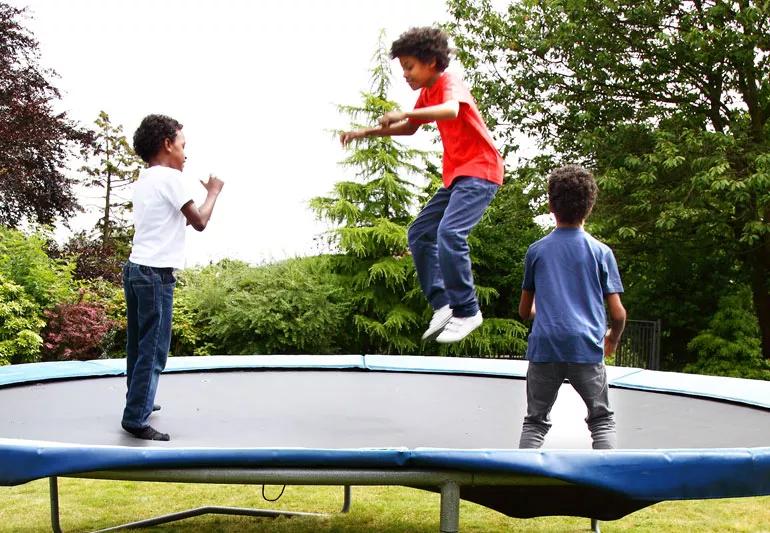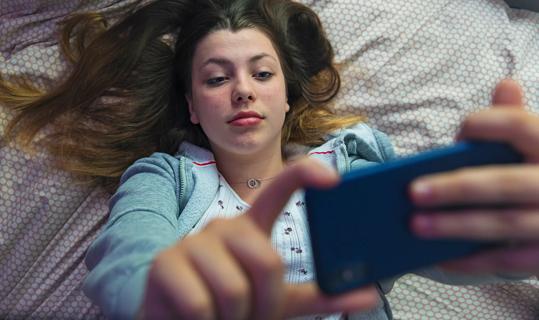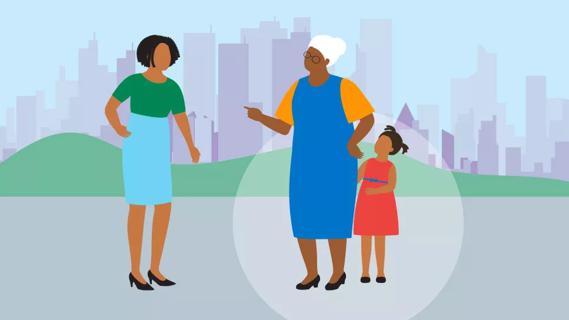Consider other outdoor activities

Trampolines are popular among kids and adults, but there’s no denying they’re dangerous. Whether kids are supervised at an indoor park or jumping on a trampoline in the backyard, there’s always risk for significant injury. This makes trampolines inappropriate and dangerous for play.
Advertisement
Cleveland Clinic is a non-profit academic medical center. Advertising on our site helps support our mission. We do not endorse non-Cleveland Clinic products or services. Policy
The American Academy of Pediatrics suggests trampolines should never be used unless athletes are being supervised in training for a sport like diving or gymnastics. As the weather warms each season, however, pediatric orthopaedists tend to see an increase in fractures.
“Kids have been cooped up all winter long,” pediatric orthopaedic surgeon Ryan Goodwin, MD, says. “We expect to see trampoline and bicycle fracture rates rise.” Dr. Goodwin has treated trampoline injuries where bones are broken so severely that they need emergency surgical repair. And it’s not just fractures. Concussions, head and neck injuries, sprains and strains are also common.
Despite your kids pleading and reassuring you they’ll be fine, here’s some data to help you stay fast in your decision to say, “No.”
Research reported nearly 100,000 trampoline-related injuries in a one-year period among children. Some of the takeaways?
Advertisement
Just because trampoline parks are common and trampolines of all sizes dot your neighborhood in summer doesn’t mean there aren’t other alternatives for exercise.
“Jumping on a trampoline is physical exercise. And, of course, being active and limiting screen time is important,” Dr. Goodwin says. “But there are much safer forms of outdoor physical activity.” Play frisbee, take a hike, play catch or going on a bike ride — but wear your helmet!
If you already have a trampoline and want to keep using it, here are some safety rules that should be followed at all times:
Many injuries still occur despite adult supervision, Dr. Goodwin notes. Because of the overall risk, many homeowners insurance policies don’t cover trampoline-related injury.
The absolute safest way to avoid trampoline injury? Stay off of them.
Advertisement
Learn more about our editorial process.
Advertisement

It’s not just about people you don’t know — it’s about behaviors that don’t feel right.

Sexting has become all too common among kids, putting them at risk for bullying, blackmailing and human trafficking

It’s never too early to teach your kids who strangers are and how to avoid unsafe situations

Talk with your kids about online risks, and consider monitoring their activity

Many cosmetic products can cause poisoning and chemical burns

Combat summer learning loss and keep young brains engaged with low-pressure learning

Several conditions, like vitiligo and fungal infection, can cause a loss of pigmentation, leading to white spots or patches on your skin

Changes in your child’s emotions, behavior, sleep and appetite can all point to depression

The best parenting style balances enforcing rules and showing plenty of love

Tips include cutting back on sugar, focusing on exercise and managing stress

It can be harder to let go when you’ve invested time, energy and emotions — but it might be the healthier choice long term